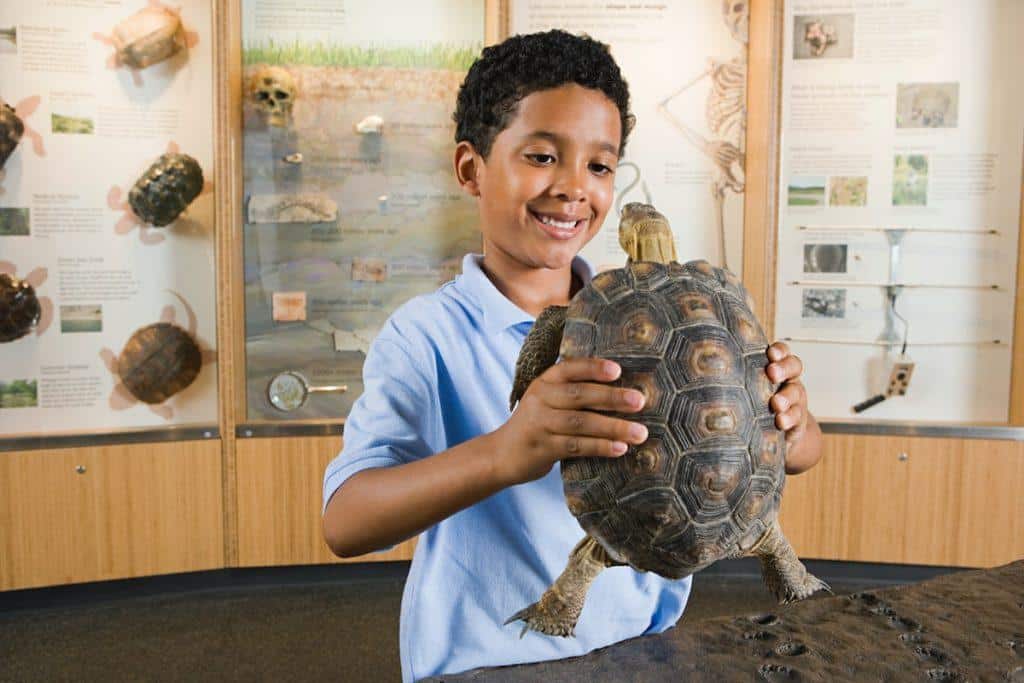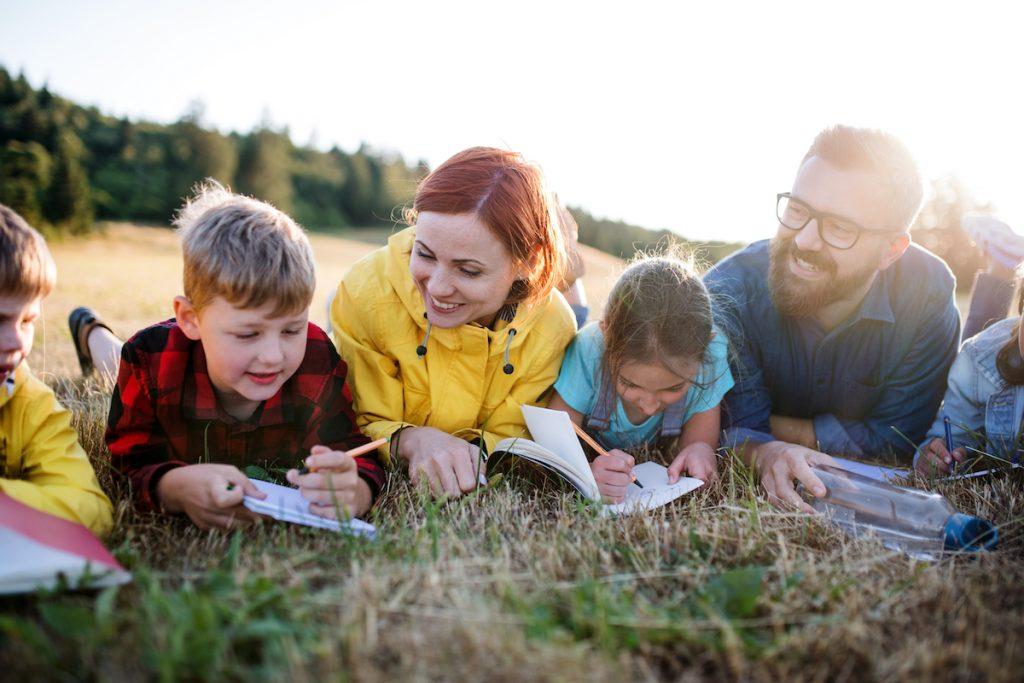Place Based Education for Connecting Students to Communities
Place-based education is an approach to teaching that incorporates the location–such as the city, state, or region–where the learning takes place. This might include the exploration of local resources, cultures, heritage, arts, knowledge, skills, issues, and geography as a pillar of students’ curriculum.
This is actually how children used to be educated. Think about generations before when children, for example, might have grown up on a farm. They would learn about agriculture and animal husbandry. They’d be taught about seasons and weather. Children of blacksmiths or cobblers would help out and learn their parents’ trades. Young people didn’t go away to college; they became apprentices. The learning was hands-on and practical.
Naturally, this was all prior to technology like the internet or airplanes, which brought about massive shifts affecting all areas of life. Education was no exception. Globalization changed how people viewed education. We got standardized testing. Sure, it makes sense that in a global community, we all need to have the same basic knowledge. But there is so much to be said for place based knowledge in addition to standard academia.

Place based education can happen formally or informally. It can be incorporated into a unit, class, or entire curriculum at school. It can also be practiced outside of school by parents.
Place based education can revolve around settings that are rural, suburban, or urban. Everywhere in the world has its own rich history, cultures, challenges, and wonders. And all of what’s unique to a location is ripe to share with students, and add value to an educational approach.
Table of Contents
- Place Based Education for Connecting Students to Communities
- What are the Benefits of Place Based Education?
- How to Implement Place Based Education
- Ideas for Place Based Education
- Place Based Education FAQs
What are the Benefits of Place Based Education?
Respect, Understanding, and Appreciation for Community
Place based education fosters a child’s sense of connection to their community. People often grow feelings of disdain or boredom with the area they’ve grown up in as they hit adolescence and young adulthood. It’s normal and healthy to want to move away for college, or to travel. And it’s perfectly ok to not return to live in the same area one’s whole life. But it’s also healthy for people to develop an appreciation of their roots. Place based education is how that’s accomplished.
An understanding for an area cultivates a sense of responsibility for it. Students who understand the land and the history and the struggles of their town are much more likely to want to take care of it. The people and the environment around you have a deeper significance to you when you know them.
The responsibility students learn to feel via place based education can lead to the improvement of their problem-solving skills as well as collaboration with others towards helping, preserving, and improving a shared and treasured community.

Students taking responsibility for their cities and states can observe their own ability to effect change on the world. They can develop leadership skills as a result of place based education, and learn to view themselves as leaders.
From a purely academic standpoint, place based education can also better connect students to the material they are learning. Place based education is another access point to the teacher’s holy grail: making learning interesting! Beyond just being more interesting, a lesson becomes more relevant when it’s applied to something real-world, like the very town students live in. Place based education makes the reasons for learning a topic clear to students immediately, rather than leaving information learned to eventually come up in adulthood. So place based education is a great way to boost student engagement and deepen learning outcomes.
Place based education allows learning to be inquiry-based. Getting students to think about the world directly around them fosters curiosity, and naturally encourages questions, predictions, data gathering, and improved problem solving skills.
Learning about local indigenous cultures also helps everyone. Students with indigenous backgrounds may feel less alienation within the predominant culture when their heritage is understood and honored. And it’s crucial for students with backgrounds from outside of indigenous cultures to understand and appreciate the cultures, traditions, and people who came before them.
Students aren’t the only ones who benefit from place based education. This obviously benefits the community as well! New stewards for the land, people, and traditions of an area are born whenever place based education is promoted. The local environment, economy, and people can all benefit from the community impact of place based education.

How to Implement Place Based Education
There is no wrong way! Place based education leaves an incredible amount of room for both teacher and student creativity to flourish. However, that freedom can certainly leave a teacher wondering where to even begin. Consider the tips below to help you on your way to bringing this teaching concept to your own classroom.
Keep Your Eyes Open for the Opportunities Around You
Start by observing what’s around you at school, in your neighborhood, and around town. Keep your mind open to the possibilities you see for learning. For example, a forest near the school that can be explored, or a challenge to the community, such as a dangerous intersection students can create a solution to and propose to the local government. What else do you see that presents an opening for teaching something new?
Seek Out Experts and Organizations in Your Community
Who do you know that can give special opportunities to your classroom? Maybe you know a firefighter that can take kids on a tour of the station. Or a farmer that can give students a hands on experience with agricultural technologies. What learning partners can you connect with to come talk to or present to your classroom? Who can give feedback on students’ work, either in-person or virtually? Who can students shadow in their workplace or in the field? What organizations would welcome a tour group or have volunteer opportunities?
If you don’t already personally know the people and organizations you’d like to connect with, find ways to contact them or be introduced to them. So many folks are happy to share their passions and knowledge with you if you only ask!
Consult with other teachers and pool together a shared database of contacts. Or take on a parent volunteer who is great at fostering relationships and creating introductions. Have them call and email places to set the wheels in motion for the greater learning opportunities you envision. If you’ll be the one reaching out, come up with a good email template for contacting potential learning partners.
Remain Flexible
See what draws your students’ attention. Make note of the opportunities that present themselves. Being flexible in your approach will create the most engaging learning experience for your students.
Keep an Eye Out for Interdisciplinary Opportunities
Place based learning isn’t always as formal and structured as typical classroom learning, so there are often opportunities for place based education to be interdisciplinary. For example, if you were tending to a community garden with your students, you could teach them about horticulture as well as nutrition, food scarcity, cooking, traditional local cuisine… whatever works for you and your students.
Follow Up with Classroom Discussion
Remember to debrief after a field trip or activity. Ask some questions for discussion. What did they learn? What did they enjoy? What further questions did the experience raise for them? What next steps can be taken?
Ideas for Place Based Education
There is absolutely no limit to how you can give your students a place based education. But if you could use some plans to try out or some inspiration to get your creative juices flowing, consider the following ideas.
North American Prairie Wildlife Flashcards



- Set up a trail cam to observe local wildlife
- Take students to a local theater production
- Invite a member of an indiginous culture to speak with students
- Visit a farm with the whole class
- Participate in a prairie burning
- Plant and tend to a community garden

- Operate a soup kitchen
- Participate in the Great Backyard Bird Count
- Attend a musical concert
- Go see a dance troupe perform
- Visit a museum focused on the region
- Study the biodiversity of a local lake or river
- Teach students cartography based on the local area
- Cook a local cuisine
- Help students learn a language native to the region
- Create art in the mediums and traditions of a local culture
- Text your American zip code to (907)312-5085. You will receive an automated text response listing the Native American tribes local to the area. Learn about the cultures and traditions of those people.
- Take a trip to a park in the area
- Coordinate a tour of a local place of worship outside of your students’ own practices
- Collect and study the local soil
- Brainstorm challenges faced by the community and their possible solutions
- Have students research and then write historical fiction set in their own town
- Invite local politicians to speak to your students about how the local government works
- Visit your state capital
- Let students research their state symbols. These include minerals, colors, dances, birds, flowers, fossisl, insects, songs, sports, and more. State symbols are a goldmine of place based learning ideas.
- Ask your students to brainstorm their own ideas for implementing place based learning!
Place based education is the original means of learning, and it’s a wonderful tradition to continue with in our own work; let’s not let this teaching philosophy be lost to time! The benefits are innumerable, both for students and communities. Place based education helps teachers motivate students to not only deepen their connection to academic material, but to connect with and strengthen their local environments, cultures, and communities.
Place Based Education FAQs
Yes! There are many. Here are a few to consider:
A Pedagogy of Place: Outdoor Education for a Changing World by Brian Wattchow and Mike Brown
This book focuses on education that takes place outdoors.
The Power of Place: Authentic Learning Through Place-Based Education by Tom Vander Ark, Emily Liebtag, and Nate McClennen
The Power of Place argues that place based education is attainable for communities of all settings and economic brackets, and teaches student agency, equity, and community.
Bringing School to Life: Place-Based Education across the Curriculum by Sarah Anderson
Targets teachers of students in kindergarten through eight grade, and provides strategies for implementing mapping, local history, and citizen science into a place based educational approach.
Place-based Curriculum Design: Exceeding Standards through Local Investigations by Amy B. Demarest
This resource is full of examples of place based learning as well as help integrating the approach into your own classroom.
Some more place based education books to consider:
Place- and Community-based Education in Schools (Sociocultural, Political, and Historical Studies in Education) by Gregory A. Smith and David Sobel
Take the Journey: Teaching American History Through Place-Based Learning by James A. Percoco
Place-Based Education: Connecting Classrooms and Communities by David Sobel
Place based learning connects students to their communities! It’s because of place based learning that people have been able to pass down traditions, culture, and solutions to their communities since the dawn of humankind. Continuing on the tradition with students today fosters respect and appreciation for the communities we live in.
Certainly money and resources help facilitate anything you want to accomplish, so the more bountiful those things are to you, the more you can implement in your place based educational approach. But the beauty of place based learning is that it’s a teaching philosophy that honors location, whatever it may be. There is something to be learned anywhere you are. The only real limitation then, is what you can dream up.
